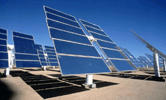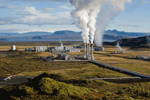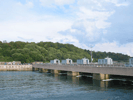

Building shading, use of natural light, passive cooling, natural ventilation are some of measures which SMW can be employed in building design to meet environmental policies and optimise the use of energy within the built environment.
Aware of the constantly changing demands of environmental issues, SMW is committed to the principles of sustainable development and is constantly reviewing its environmental policy.
Energy and environmental issues are included in project reviews as a standard procedure. We also offer our clients:
- Application of Energy Efficiency Measures in Buildings
- Energy and Environmental Audits
- Environmental Benchmarking (BREEAM)
- Environmental Management
- 3D Thermal Modelling
- Building Air Leakage Testing
- Neutralisation and Air Sealing of Buildings
- Refrigerant Gas Audits
OTHER SERVICES
Renewable
The reduction in the consumption of fossil fuels and the generation of heating, cooling and electricity through renewable energy technologies is implicit to moving towards a sustainable future.
SMW can provide integrated solutions to virtually all sites through the practical application of expertise and the appropriate application of new technologies.
Our services embrace:
Solar power

Solar power is renewable as long as the sun keeps burning the massive amount of hydrogen it has in its core. Even with the sun expending 700 billion tons of hydrogen every second, it is expected to keep burning for another 4.5 billion years!
Every day, the sun radiates 3,000 times more energy onto the Earth's surface than we use (96,000 versus 321 terawatt hours). This solar radiation can be used in a number of ways to produce power.
Current technologies:
- Photovoltaic cells (PV's) convert sunlight into electricity
- Solar Hot Water panels heat water for domestic use
- Power towers - large centralized solar power plants that use many acres of mirrors to collect and focus the sun's power. This focused heat turns water into steam that is used to power a generator.
Wind power

Global wind capacity has grown an average of nearly 30 per cent annually during the past decade, with more than 40,000 MW of turbines now spinning worldwide. This provides energy to about 19 million European homes and 9 million homes in the US.
Denmark is currently the world leader in wind power. By 2030, fifty percent of Denmark 's energy could be produced by wind power. Randall Swisher, executive director of the American Wind Energy Association says, "If this country made an aggressive development push, by 2020 eighteen percent of the country's energy could be supplied by wind power.
While Europe accounts for about 70 per cent of total capacity, wind is now generating electricity in at least 48 countries.
Hydro-electricity

Currently supplies only six percent of the world's energy. Energy is produced by hydraulic turbines that rotate with the force of rushing water. It is one of the most clean and cheapest ways of producing energy, but it can also change the flow of rivers and increase sediment which kills fish. It is a large investment for.
The UK currently generates about 1.8% of its electricity from large-scale hydroelectric schemes. If hydro power from all of the streams and rivers in the UK could be utilised it would be enough to meet just over 3% of our total electrical needs.
Geothermal power

Geothermal poweris energy generated by heat stored beneath the Earth's surface or the collection of absorbed heat in the atmosphere and oceans. Prince Piero Ginori Conti tested the first geothermal generator on 4 July 1904, at the Larderello dry steam field in Italy.[1] The largest group of geothermal power plants in the world is located in The Geysers, a geothermal field in California
Geothermal energy offers a number of advantages over traditional fossil fuel based sources. From an environmental standpoint, the energy harnessed is clean and safe for the surrounding environment. It is also sustainable because the hot water used in the geothermal process can be re-injected into the ground to produce more steam. In addition, geothermal power plants are unaffected by changing weather conditions.
Wave/Tidal Power

Tidal power, sometimes called tidal energy, is a form of hydropower that exploits the movement of water caused by tidal currents or the rise and fall in sea levels due to the tides
This is the only form of energy which comes from the tidal forces by the Moon and the rotation of the Earth in the Earth-Moon system, though some of it comes from the solar tidal forcing as well. Most other sources of energy originate directly or indirectly from the Sun, including fossil fuels, conventional hydroelectric, wind, biofuels, and solar. The remainder, nuclear and geothermal for instance, have radioactive material on Earth as their source.
Bio-energy

Bioenergy is renewable energy made available from materials derived from biological sources. In its most narrow sense it is a synonym to biofuel, fuel derived from biological sources. In its broader sense it encompasses also biomass, the biological material used as a biofuel, as well as the social, economic, scientific and technical fields associated with using biological sources for energy. There is a slight tendency of the word bioenergy being favoured in Europe compared to biofuel in North America.
